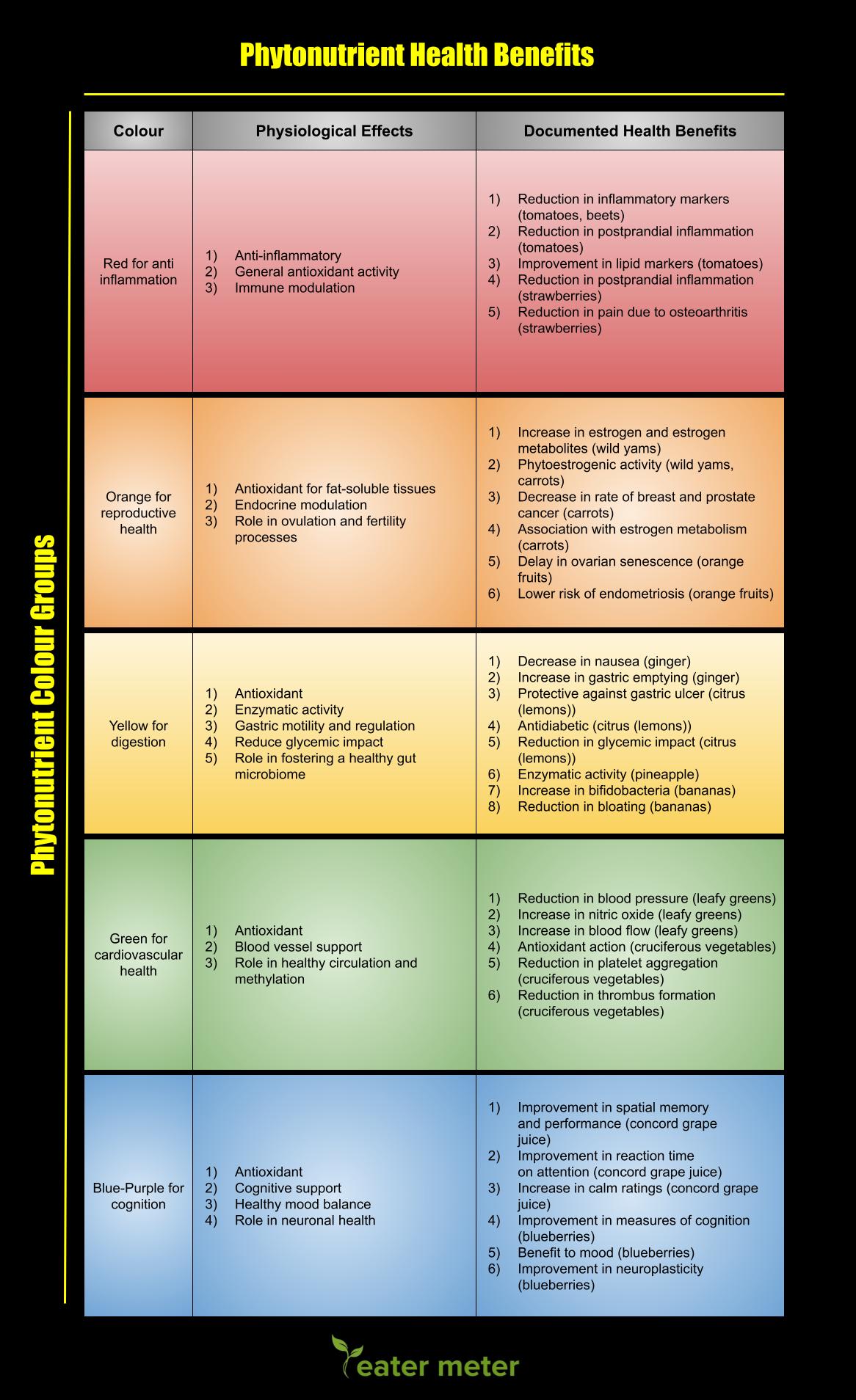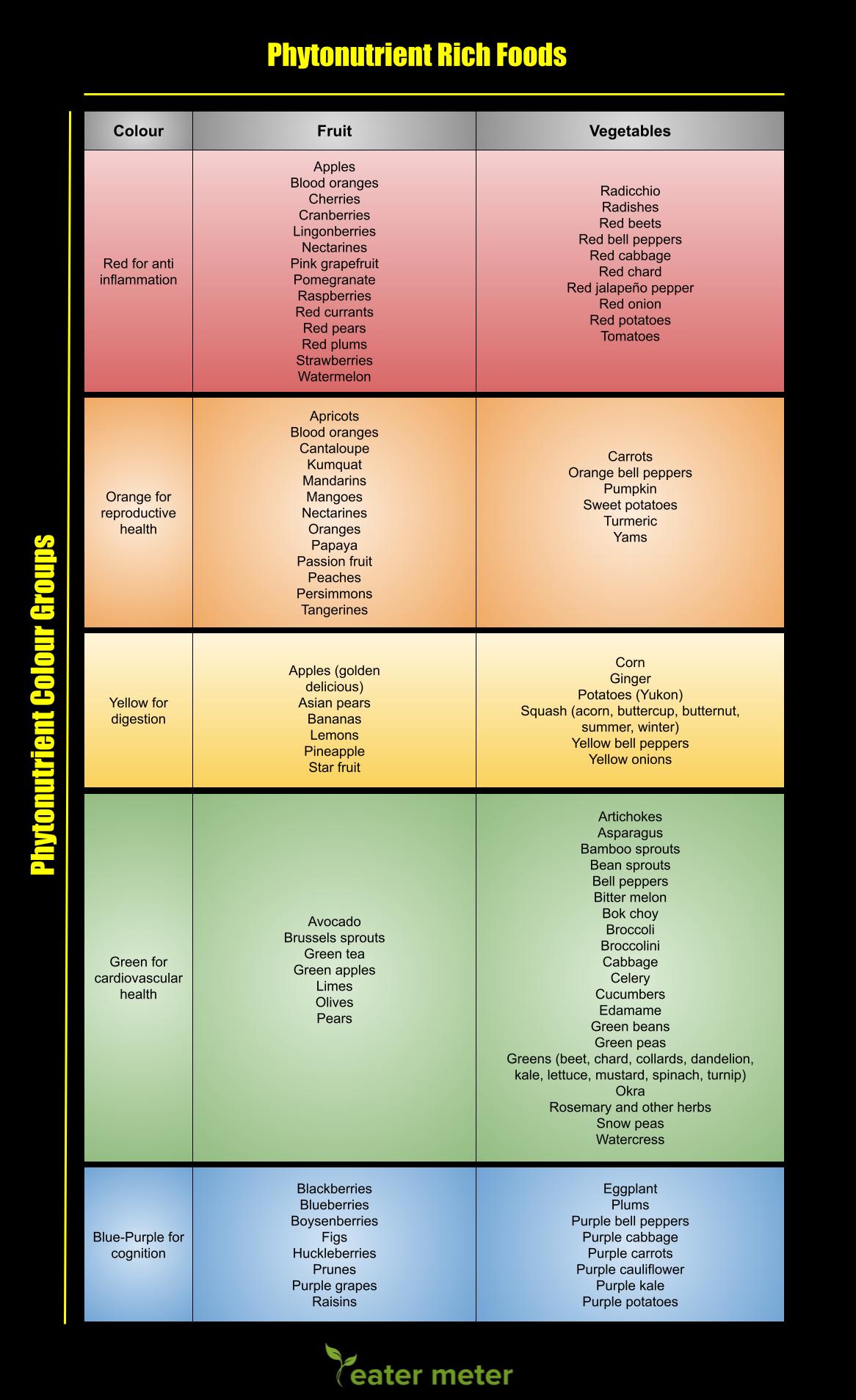CATEGORIES
Eating the Rainbow - Why a Colourful Plate Leads to a Healthier Diet
Nov 01,2021

If you came to this article to read about eating rainbows, I am sorry for the misleading title. The title is a metaphor to discuss whether a colourful plate of healthy whole foods leads to a more nutritious diet through increased food diversity. Let us look at the research regarding the relationship between a colourful plate of food and healthier eating.
Why is a colourful plate important?
Often, increasing plant food diversity gets cited as necessary for expanding the range of vitamins and minerals in your diet. However, have you ever heard of the importance of phytochemicals in your diet? Phytochemicals (or phytonutrients) are naturally occurring substances in plants. These phytonutrients can provide benefits beyond vitamins and minerals found in plants. And what is the primary indicator of different phytochemicals? Colour!

Photo by Dora Cavallo on Unsplash
Colours such as the red of strawberries or the blue of blueberries can indicate unique phytochemical substances. These substances are said to work in synergy with the vitamins, minerals and fibre found in plant foods.
There are generally five colour groups that contain phytonutrients:
- Red;
- Orange;
- Yellow;
- Green; and
- Blue-Purple.
Each of these colour groups is associated with specific health benefits. Are you curious which colour does what? Go forth, rainbow child! And fill your mind with colourful knowledge!
What do phytonutrients do? Phytonutrient health benefits
Research shows that phytochemicals have many physiological effects on the body, some of which we are only beginning to understand. For example, red fruit and vegetable foods, such as red bell peppers, cherries and beetroot, influence antioxidant, anti-inflammatory, and immune-modulating activities. Additionally, orange-coloured fruit and vegetables such as oranges and carrots may be associated with improved reproductive health, specifically from the group of phytonutrients called carotenoids.
I could go on and on about the remaining colours, or I could say to refer to this handy table for ease of reference!

Note: Documented health benefits and the bracketed foods means that these foods have evidence in scientific literature to provide the respective health benefits.
Research into phytonutrient studies is relatively new. However, such a study found that a higher intake of red/purple fruits and vegetables were related to lower weight and abdominal fat gain, while yellow, green, and white fruits and vegetables influenced various lipid parameters in the 1,272 adults studied. Another study found that higher intakes of white fruits and vegetables significantly reduced the incidence of stroke for each 25g per day increase. The same study found that for every 25g increase of deep orange fruit and vegetables, there was a reduction in the risk of coronary heart disease.
Foods rich in phytonutrients
After having all this colourful talk about phytochemicals, phytonutrients, and their potential health benefits, what should you eat? Additionally, what should you eat to support different aspects of your health? Below is another table to help you!

It is safe to say that including a diverse and colourful plate will ensure you receive a healthy dose of phytonutrients from all colours of the rainbow! If you are subscribed to Eater Meter or are considering subscribing, our scoring system considers your food diversity and how colourful your plate is. So if you are trying to improve your dietary health in a manageable way, check out our website and its features here.
Cover photo by amoon ra on Unsplash
